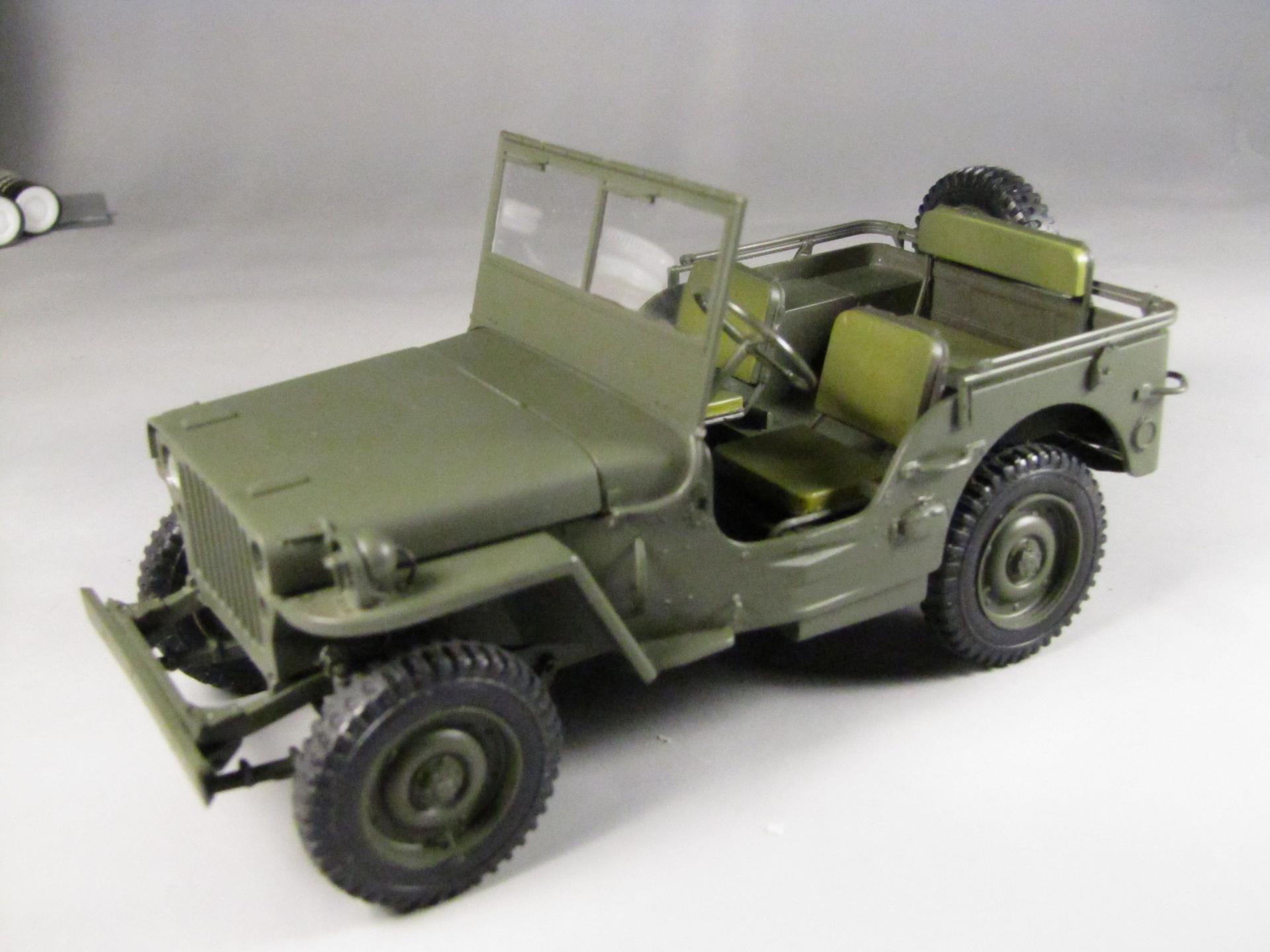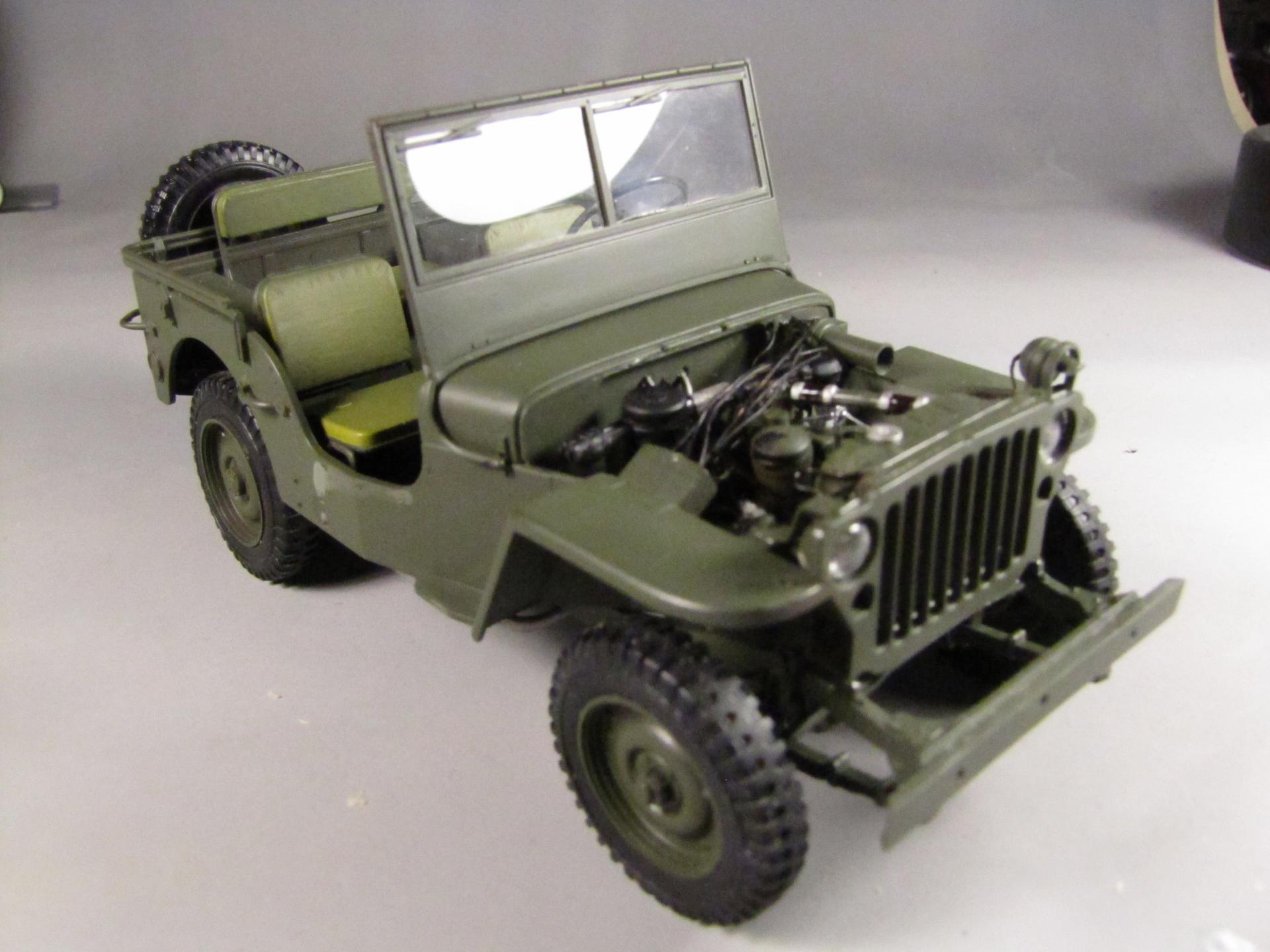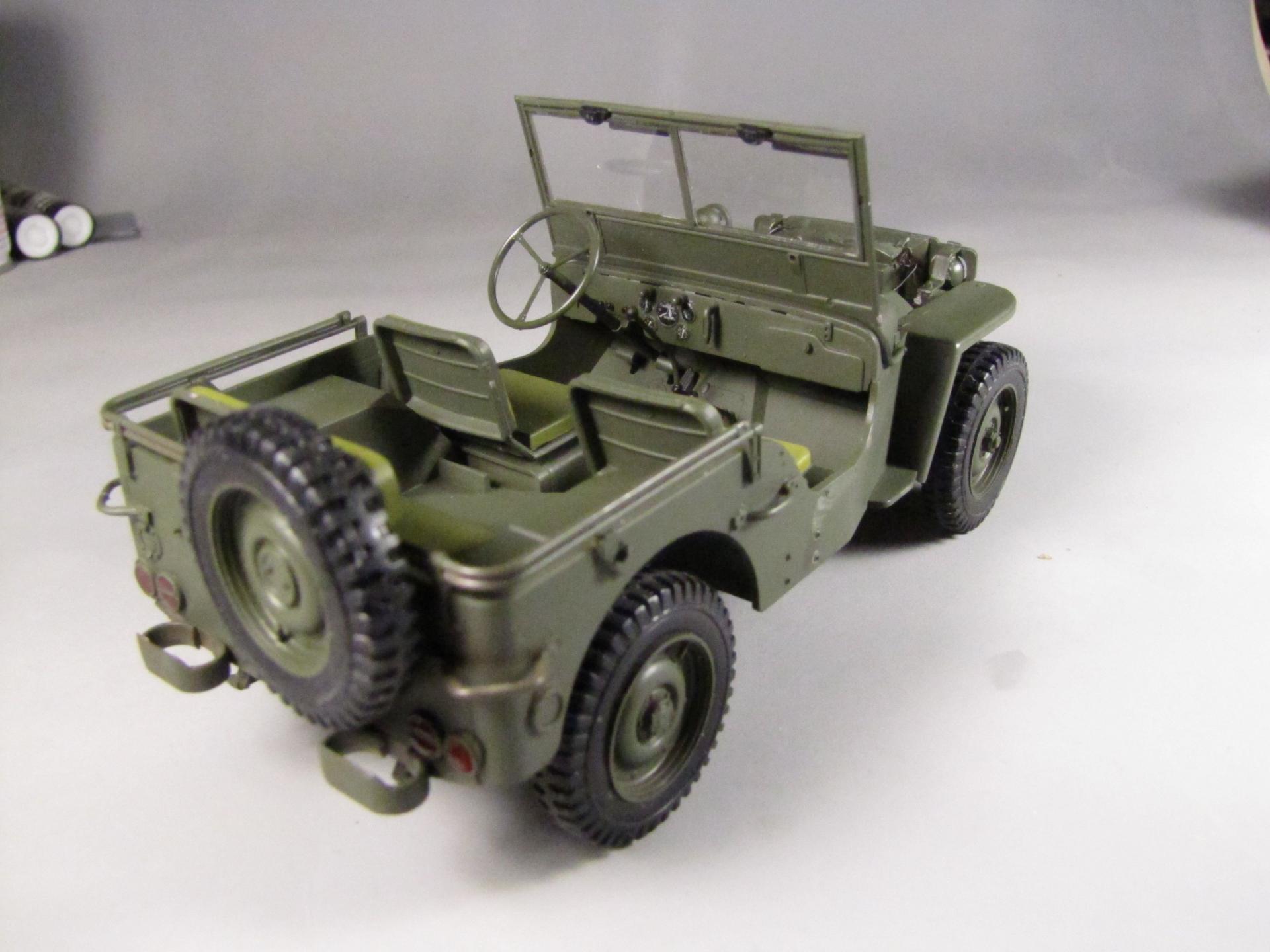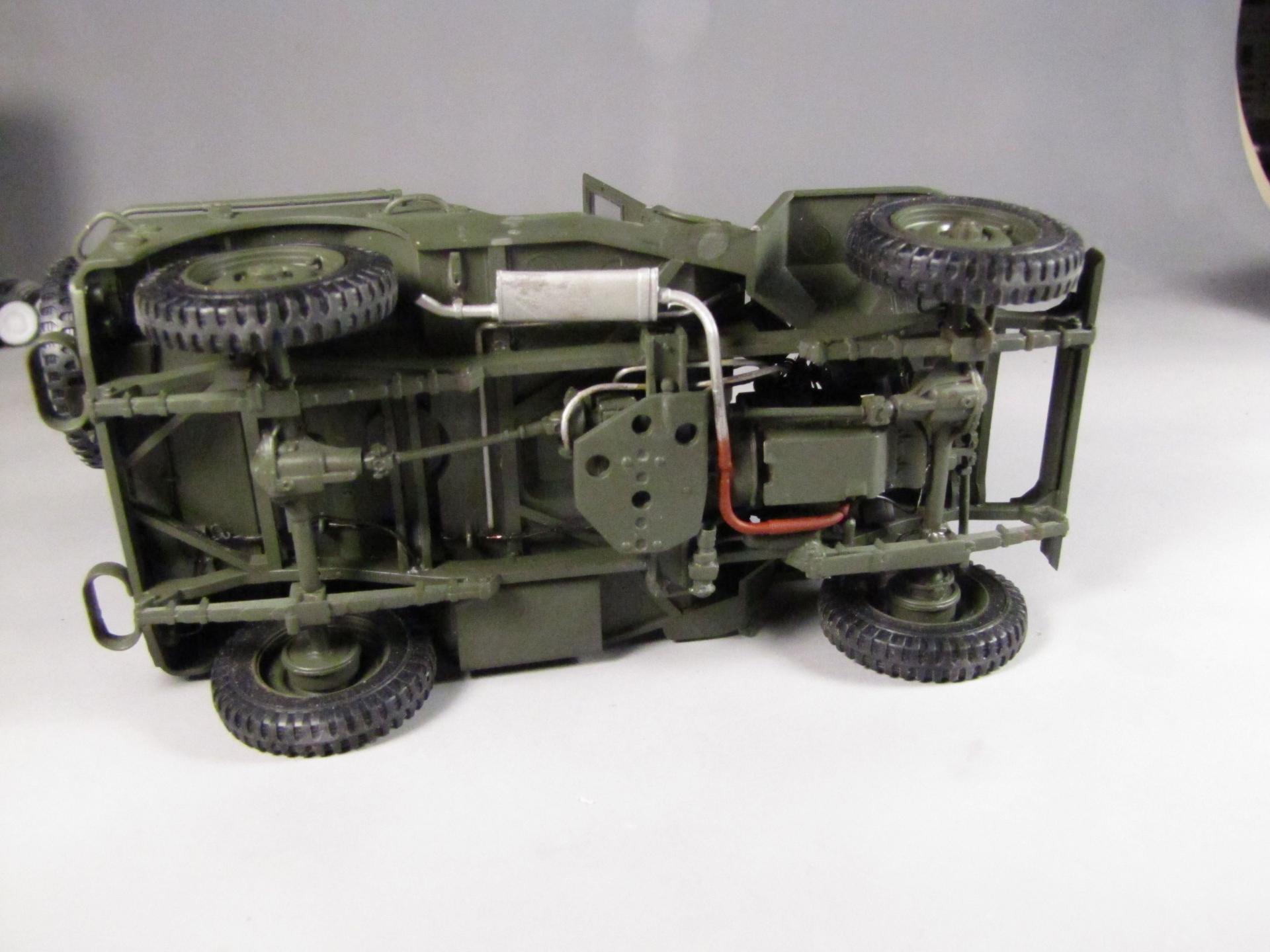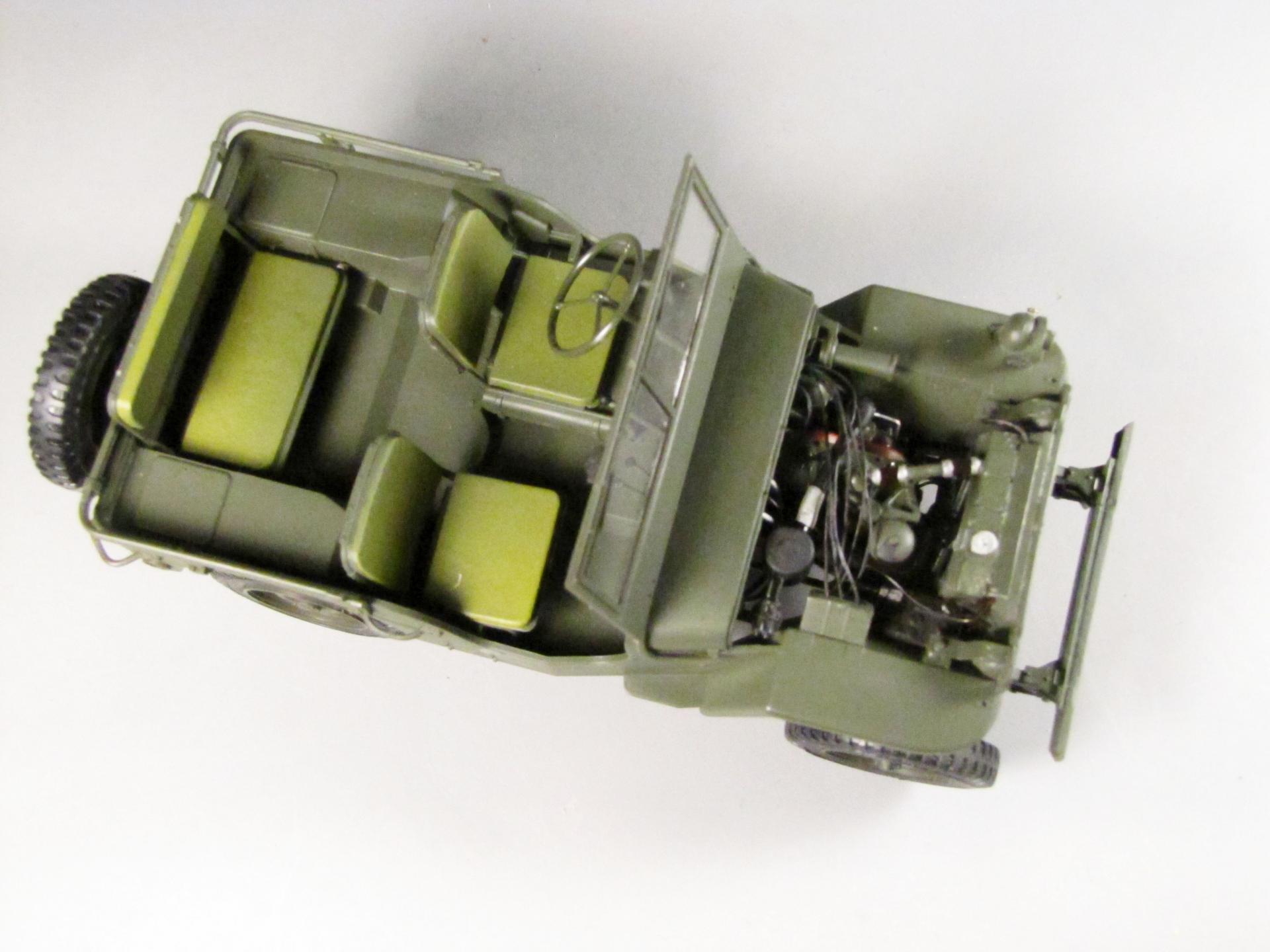
Art Anderson
Members-
Posts
5,052 -
Joined
-
Last visited
Content Type
Profiles
Forums
Events
Gallery
Everything posted by Art Anderson
-
Actually, there are two Chevy II's, a hardtop, and a 2dr post gasser (it should be possible to kitbash the 2dr in to a stock version by using the Nova chassis, dash and steering wheel, but the rest of the stock interior would have to be scratched up by the builder. As for the F-100's will be 1965 and 66 only, and for two reasons: First of all, the chassis that was used 1969-72 debuted in 1965, with the introduction of the Twin I-beam front suspension, and second. 1965 saw the introduction of styleside beds that were no longer built in the unibody fashion. In addition the short wheelbase '65 will be offered with a flareside bed at some point (that tooling mockup was shown at Detroit/ Art
-
Detroit Show, hope to meet you there
Art Anderson replied to 64SS350's topic in General Automotive Talk (Trucks and Cars)
I'll be there, along with Dave Metzner of Moebius Models. Come see us at the Moebius table! Art -
Help with Buick Reatta Promo
Art Anderson replied to Billschneider64's topic in Model Building Questions and Answers
Cool! I actually worked up the Reatta Convertible from this same promo, back around 1992-93. It was easy to do, frankly, but never did see a rubber mold, as I decided it would be too expensive for the resin kit market at that time. Art -
What you have are pre-built store display models, which were quite common back in the early days of plastic model kits. It's hard to believe nowadays, but back in the 1950's, selling plastic model kits was often a "missionary sale"--adults at the time didn't understand them (after all, molded plastic anything aimed at kids were seen merely as toys--why have to assemble them, huh?) so several companies offered, on a one-time basis, built examples of their newest kits, some (such as Best, and Revell) mounting them in cheap store counter plastic showcases such as this, while Aurora and Monogram offered them to retailers fastened to heavy, lithographed cardboard display bases. While Best Plastics faded from the scene by about 1956 or so, their model race car kit tooling winding up at Aurora Plastics Corporation, and Revell discontinuing this sort of promotion after only a few boat and ship model kits, both Monogram and Aurora offered them, on a one-time basis well into the late 60's, Monogram with plastic model military airplane models, Aurora with their very famous (and popular for the time) Universal Studios movie monster kits, and lastly, their Prehistoric Scenes dinosaurs. How were these marketed? Very simple: Plastic model kits originally came in lots of a dozen per carton, and with the announcement of the pending availability of a new kit, model companies would advertise, pre-release, a one-time "baker's dozen" (that meaning 12 kits, plus a builtup Point of Sale display model) as a deadline-specific buy for retailers. Weber's, the hobby shop where I worked my way through college 1964-68, and later as assistant manager in charge of plastics and model railroading, hung on to every one of these, stored up on the second floor of their downtown, Main Street store. While i never experienced any Revell POS display models, I sure did see many Monogram POS displays, most notably the 1/8 scale model car kits--and virtually all the Aurora Movie monster figures. Monogram's model car POS display cars were almost always devoid of any paint, their 1/48 scale aircraft POS displays always had at least some camouflage pattern, but on just the right-hand side of the model, the left wing was almost always inserted into a diecut slot in the upright portion of the display. Aurora's Movie/TV Monster series of figures were much more detailed in their factory paintwork, even down to "spray masked" colors (the way multi-colored, 2-tone diecast model cars are painted to this day), with such as eyes, lips done by hand at the factory. Even their Prehistoric Scenes dinosaur kits of the late 60's/early 70's were done this very way. (Oh and BTW, the Best Models Indianapolis winner kits, while crude, did inspire me to begin building model Indy cars -- I live just an hour northwest of the Speedway), their line including not only the Bill Vukovich Fuel Injection Special, but also the 1920 Monroe (Real cars were designed by Louis Chevrolet, and built up by him and his brothers), the 1931 Miller Special, 1935 Gilmore Special, and the 1953 Fuel Injection car you show. Those kits also inspired a very young Chris Etzel (who was a weekly customer at Weber's back in the late 60's as a 6yr old kid!) to ultimately create his line of 1/25 scale resin & white metal kits under the Etzel's Speed Classics name.) Art
-
Sharpie always rises to the surface
Art Anderson replied to brad4321's topic in General Automotive Talk (Trucks and Cars)
Well, I've used 91% Isopropyl Alcohol to erase Sharpie markings from body shells, and it DOES not "get into" polystyrene whatsoever--it's not a solvent for polystyrene. Enamel thinner has also done the job for me more than once with Sharpies. Of course, why use a Sharpie to begin with, when there are much finer tipped artist's pens that do work, with inks that simply wipe off with my fingers? Art -
Modeling Family Cars: 1970s Chevrolets
Art Anderson replied to AdamC's topic in General Automotive Talk (Trucks and Cars)
It it was done to fit the Fall Guy (which is MPC 1/25), yes it will work with the MPC '78 Chevy cab. Art -
Modeling Family Cars: 1970s Chevrolets
Art Anderson replied to AdamC's topic in General Automotive Talk (Trucks and Cars)
MPC, as you wrote, did produce a '78 Chevy Stepside pickup. But, MPC also did the "Fall Guy" early 80's GMC short fleetside pickup, which box can be used to replicate a 73-later Fleetside. If making a long bed from this one, it will take two beds and two chassis, due to the longer overall length and wheelbase. The dimensional differences are very easy, and not at all hard to replicate: The short bed (78 Chevy) is 6' 6" long in scale, as is the GMC Fleetside short box. To stretch the Fleetside to 8' (standard Chevy/GMC long bed, that box (and the chassis underneath) is 12" longer, with a rear overhang that is 6" inches longer. That accounts for the 18" difference in overall length, and the 12" longer wheelbase. As the bed sides on the Fleetside are parallel, it's a very easy conversion to make, been there, done that, won the Tee-Shirt, when I was doing cast resin kits and conversions under the All American Models name back in the 1990's. Art -
Embossing Powder and heat
Art Anderson replied to Back after 50 years's topic in Model Building Questions and Answers
Uh, never give up, just because some fellow modelers spin back less-than-desirable answers! In all this discussion, be it embossing powders, or whatever, bear in mind that when using materials that weren't necessarily created for our model car hobby--experimentation may well be the answer. Just because embossing powders are meant to be used one way (heat in this instance) in crafting, does NOT necessarily mean that they cannot be used (off the chart or grid so to speak) by us in different ways. As some have mentioned, the good old standby "spoon test" is a great idea--as would be testing on some surplus model car part that you'd likely NEVER use. FWIW (or not!), I suspect I am one of the longest-tenured model car builders on this, or any other model car forum--been building constantly since August 1952--in other words, more than 65 years. I've tested many things, many techniques over all that time, and have had my successes and my failures. But one thing I have never adopted, is to give up on model car clubs (my experience with those goes way back, into the 1960's) or online model car forums (since 1995). No matter the situaton (model car wise), our's can be a "trial and error" thing--Edison remarked that every failure in his quest for the electric light just showed him another way NOT to do it). Be not intimidated, my friend--even as a toddler, you had to discover that walking is a series of "controlled falls" (you fell from one foot to the other, repeated the process until you figured it out, then you WON!). So, please don't give up, and please don't give up, because "instant gratification" only happens in a very few of the activities we engage in. Art -
New variation on ICM's model T a 1912 C-cab
Art Anderson replied to lysleder's topic in Truck Kit News & Reviews
Mine is in transit from MegaHobby as I write this. Art -
Testors Model Master paint
Art Anderson replied to crazyjim's topic in General Automotive Talk (Trucks and Cars)
For what it's worth, from my having spent upwards of 25 yrs in retail hobbies (full time employee then store owner), Floquil and Polly S both were very much at the bottom of sales where hobby paint was concerned--as both appealed ONLY to a portion of both the model railroad and military modeling hobbies. With model railroading any more, "ready-to-run" appears to have taken over from the days of those really neat but "craftsman-only" kits made from basswood, with cast metal ends and details, and with Floquil one had to use an airbrush to get any satisfactory finishes on plastic rolling stock or buildings. Polly S hit in the very late 1960's with tremendous fanfare--but again, it took different techniques (even airbrushing) for the military guys to get their desired results. FWIW, RPM is the acronym for "Rockford Paper Mills", who bought or merged with Testors a good 50 years ago or so, and remained a fairly small, if conglomerated firm until the late 1980's when they began expanding into other lines of paint. It doesn't surprise me at all that their hobby paint lines are at unsustainable levels, sales-wise. Art -
The "riveted" wheels you mention are correct for a WW-II Jeep. They were in two halves, inner and outer, and BOLTED together, not riveted. That was for easier tire changes "in the field". As for the MPC Jeep, it is NOT a WW-II vehicle, but rather a postwar civilian jeep (CJ-2A), which was produced with more conventional steel disc wheels. A lot of confusion exists over the label on the original MPC box--"Hogan's Heroes", which was a sitcom set during World War II, in Germany. However, MPC chose to model a CJ-2A with those conventional civilian steel wheels. But it gets more interesting: As the Korean Conflict ramped up (including the start of the so-called "Cold War", the US Army was hard-pressed to find enough serviceable WW--II era Jeeps (Military Jeep production ended a full 5 yrs before the start of the Korean Conflict in the summer of 1950. By early 1951 the need for more Jeeps was critical. Willys-Overland was contracted to produce a "re-militarized Jeep, this time adapted from the CJ-2A: The M-38 Jeep. The M-38 retained all the CJ-2A revisions, including flush-mounted headlights (MB's and GPW's had their headlights mounted BEHIND the grille panel), along with the Ford-designed 7-slot stamped grille (Ford is credited with the development of that grille (albeit with 9-slots) that replaced the original Bantam/Willys welded steel bar grille (1940-41). The TV Sitcom M*A*S*H used both MB/GPW AND Willys M-38's in their show, sometimes in the same episode (Check out the TV Cable Channel "TV LAND", every day--several episodes are rerun daily) In 1954, the then-newly constituted Kaiser-Willys began delivery of the M38A2, the first "round-nosed" Jeep, to US and NATO forces (with a split windshield) that for 1955, evolved into the much-better-known civilian CJ-5. As for the data plates depicted by decals in both the Italeri and Hasegawa 1/24 scale WW-II Jeeps, I could find NO documentation that those were indeed applied at the factory at the time of manufacture. Therefore, in my quest to do a model of a car that could have "come off the assembly line" on the same day (July 12,1944) that I was born, I chose to leave those off. (In this case, it's a matter of either a "sin of omission or a sin of commission". Art
-
Actually, I was employed by RC2 toward the end of that period: Their product/marketing manager was a woman, who came from their Collector Doll unit at Ertl--she had not a clue whatsoever, as did virtually no one else at Ertl--being as most males were farm toy oriented. Art
-
How do You Say 1:1?
Art Anderson replied to #1 model citizen's topic in General Automotive Talk (Trucks and Cars)
Uh, "Mountain out of a Molehill", or akin to debating just how many teeth are in the mouth of a horse. 1 to 1 (1:1 or even 1/1) is correct. Art -
In 1944, there was no such thing as a VIN (Vehicle Identification Number) on US built motor vehicles--rather American -built and registered motor vehicles were identified by their engine number. In researching this model, yes, many Jeeps (and I assume other US military vehicles as well from the time periiod) had a number of ID tags riveted to the instrument panel--but it appears those were added after manufacture and delivery to the military (US Army in the case of this Jeep), so I didn't use them. I was aware that the Italeri WW-II Jeep is a Ford GPW, and while I do like Italeri kits in general, it is an older kit, with a few features I didn't like--most notably the tires being molded as part of the wheel halves. Art
-
Except that the "Radio Shack" of yesteryear, is no more--most have been converted to Sprint Cellphone offices, or simply closed down. Art
-
It's the Hasegawa 1/24 scale kit. Art
-
Uh, sorry! During WW-II, Jeeps were either MB (Willys Overland) or GPW (Ford, which my build represents). In the spring of 1945, with orders for Jeeps winding down (more than 650,000 Jeeps were produced during that war, so Willys began revising the bodywork into what ultimately became the CJ-2A. With the start of the Korean Conflict, the Army scoured all over for serviceable (or least rebuildable wartime Jeeps, and when that proved inadequate, contracted with Willys Overland to produce more military Jeeps. What followed was the M-38, which was a militarized version of the CJ-2A, produced from 1951-54, when the M38A1 came out, the first of the "round-nosed" Jeep which was then civilianized into the CJ-5. The M-151 was the Vietnam-era "Jeep"--the one with 4-wheel independent suspension. Art
-
Even though the original specification for the Jeep (which stemmed from the 1940 Bantam BRC) was for a scout car, the Army classified them as "Truck, 1/4 ton, 4 wheel drive" Jeeps were seldom used as trucks--most being equipped with a rear seat (removable), a pintle tow hitch, but in the case of Willys and Ford Jeeps, no movable tailgate--hence most people would consider it a car rather than a truck. As for those "rings" on the sides behind the rear wheel opening--my bad! I forget that those should be red reflectors. Art
-
Oh, I know, the WW-II Jeep was termed a "Truck, 1/4 Ton 4WD" but most consider them to be cars--in fact only a few times were Jeeps used as trucks--500lbs is a pretty small payload. So here it is, as one might have appeared coming off the assembly line at River Rouge, on 12 July 1944--the same day I "came off the assembly line". I did discover a discolored place on the left side of the body--nothing that a quick bit of airbrush work couldn't correct. For those who might question the lack of any US Army markings--those were applied after delivery to the military, at whatever unit depot they reached--not done at the factory. Art
-
Yup, Monogram Models PC-1 Their first plastic model kit!
- 10 replies
-
- indy car
- conversion
-
(and 1 more)
Tagged with:
-
Gibbons' car is a custom, I was speaking of the factory practices. Art
-
round2 archives
Art Anderson replied to ianguilly's topic in General Automotive Talk (Trucks and Cars)
NO. I really don't want to just broadcast what might be there, due to my involvement with another model company on the side. Art -
Typical 2dr coupes and 2dr sedans of that era used the same, longer-length doors (to facilitate entry/egress for rear seat passengers. IF AMT Corporation did their homework on these two (and I would bet that they did), the door lengths should be the same (or VERY close). Art
